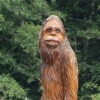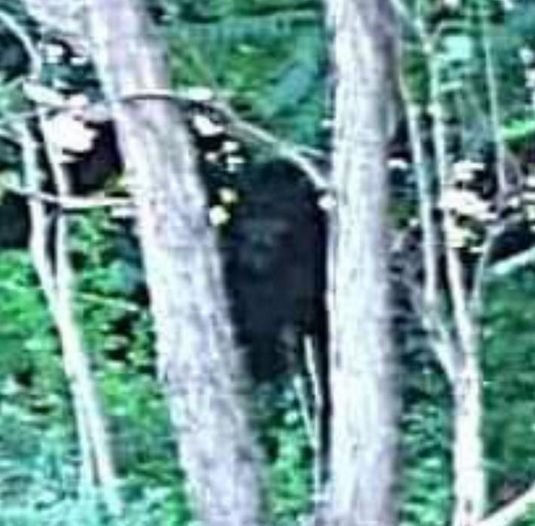Leaderboard
Popular Content
Showing content with the highest reputation on 05/24/2019 in all areas
-
I have to disagree. If you look at trees that have been through a tornado basically all finer structures like branches are stripped off by the rotary high velocity winds and hydraulic action of the water. Should a root ball be airborne in a tornado it would be like pressure washing the dirt from it. With the dirt gone the center of gravity would shift to the trunk and the tree would fall truck first. Would you care to explain how a 900 lb bigfoot could impale a tree into the ground to a sufficient depth to allow it to remain vertical? A telephone pole has to have several feet buried for it to remain upright. It would take a human with a crane and a pile driver exerting thousands of pounds of force to drive a 12 to 14 inch diameter tree into the ground. A 900 lb BF could not exert much more than its own weight. That weight is not enough to drive a something the size of a 12 inch trunk more than a couple of inches into even soft soil. If the BF could lift the tree to say 6 feet then drop it, that would not be enough to impale the tree trunk into the ground enough for it to stay upright. Certainly a BF or group of them, could erect a tree in a hole, but that would require the BF to dig the hole. As you mentioned, there is no evidence that suggests digging. The BF solution defies physics if you ask me. ...1 point
-
I came back 2 weeks ago from a nice little trip in which I slept in the back of my Tahoe for a week. Made for a nice bed compared to the ground! It’s just long enough with seats down for me at 6’2”. I suspend a large tarp in the air and put a tent under that to store my gear in and keep the truck empty for sleeping. Works out great. Forgot to add, no luck in the search for BF or mushrooms for that matter but I did wake up each day to the view of a beautiful little inland lake.1 point
-
If your shooting at armored vehicles? Buy a 50 BMG. The .50-110 was designed to shoot Buffalo and Grizzly.1 point
-
My ex teammate I spoke of. Told me he had heard reports and examined footprints that were unusual. He said the people who had spoken to him seemed credible. His superiors told him to not take reports seriously and to caution his direct reports to do the same.1 point
-
would ,love to hear the story that you alluded to regarding one of those breaks As promised, here goes: I have had two gifting sites in the Colorado Rocky Mountains for a few years now. During the Summer 2016 activity started in July with increasing intensity into mid-September during which there were a number of amazing encounters. The last of the above photos of aspen breaks relates to a vicarious encounter September 14, 2016. The photo of the break was taken 7/23/2016. It is just downhill from a trail I was taking every 3-5 days between my two gift sites, which are about 1/2 mile apart. I have stopped to admire that tree break at least 20 times - alone, with my niece, with my squatching buddy. On 9/14/16 I stopped to admire it - then continued to my gift site for a brief visit. Upon my return I found an aspen sapling placed perpendicularly across my path such that I would have tripped over it had I not removed it. As I continued hiking I kept thinking "it looks just like the top of my aspen break!" Sure enough when I reached the aspen break the top was missing. In 30 or more hikes on that trail I have encountered only one hiker (the Forest Service closed the trail years ago - sorry, that is why I use it). There were no cars in the trailhead parking area, which is also remote. I later paced off the distance the top was from the bottom - 98 yards. That, along with other intense activity in late Summer, led me to believe it was a vicarious acknowledgement that a friend was telling me she (tell you later) wanted me to know she is here (not necessarily a teaser - rather I feel uncomfortable relating events that will be certain to subject me to scorn). See attached photo with redacted notes.1 point
-
US Forest service is already ahead of you on the coverup! Physical Factors Aspen is affected by a variety of physical and mechanical factors as well. As aspen is very intolerant of shade, the lack of light may affect tree vigor and regeneration. Mature aspen trunks may sunscald if they are abruptly exposed to large increases in sunlight. Wind can sometimes severely impact an aspen grove as would a severe forest fire. Trees are blown down and broken, the area is opened up, and aspen suckering is stimulated. Snowstorms may do extensive damage to aspen if the snow is wet and clings to the aspen crowns. Limbs may break, sapling to pole size trees may be broken off, bent to the ground, and sometimes partially uprooted. Weather-related phenomenon, such as hail and lightning, temperature extremes, and drought may damage aspen.1 point
-
To continue the discussion I would like to add my observations regarding arches and tree breaks (I purposefully ignore tree structures presently, because they are much more complex, and I feel their manufacture involves more complexity). Last summer, after observing many tree breaks and arches that appeared to me to be due to other than natural causes, I began to photographically document and record their GPS x-y locations. Some observations in mixed coniferous montane forests (pine, spruce, fir, aspen trees at elevations of 8500 – 11,000 feet) over the last few years: Tree Breaks 67 tree breaks described. All involved Aspen trees. Range of tree diameter at break = 2.6 - 6.2 inches. Breaks occur from 2.2 to 15.7 feet above the ground level (median just above 8 feet). About 2/3 of the breaks exhibit obvious left rotation of a few to many degrees (max about 15* - most a few degrees only). All the observed breaks are within 100 yards of a human trail – some next to a trail, some within view from a trail, some well removed from a trail (but not far). 65 of the 67 breaks lean toward the trail – usually within 10-15* directly toward the trail (I have observed only 2 breaks that lean in the 180* azimuth away from a trail). I am including a few photos of some breaks. One of the included breaks has with it a personal story that I will relate if a discussion ensues. Arches 34 arches have been described (many more have been observed). The arches are what I say are graceful curves with a fairly consistent radius. All arches involved Aspen trees – thin saplings in every case (2 – 5 inch diameter near base). Arches were made (or occurred) while the saplings were alive and supple, although most are now dead and brittle. About half (16) have their tips anchored into the ground and then pinned with a branch (usually a short aspen branch) inserted at a low angle over the arch tip. One arch in particular was pinned in a much more complex way – see my photos in an earlier post in this thread. Once the aspen arch sapling has died the pinning branch can be removed with the arch remaining in place, so some of the older arches may have had pins removed by natural or other forces (I see no way to have determined this). In other words, all arches may have been pinned at one time. Aspen arches made during the current summer growing season (2018) rebound to some degree if they are unpinned. As a general observation – I have hiked through numerous aspen groves that do not contain a single break or arch (or other structure) that I would consider anomalous. Then, in some of those groves, it seems like I have crossed a sharp boundary and entered a zone with numerous breaks and arches (and structures and tangled, intertwined aspens – like a fence) that appear anomalous. Wind and snow certainly work in wondrous ways!1 point
-
1 point
This leaderboard is set to New York/GMT-05:00






